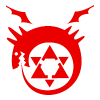Hi
Im designing a turn-based tactical game with squads of around 6vs6 soldiers with modern day firearms (think old xcom or fallout tactics). Player vs AI.
My reaction fire work like this:
1. You save timeunits (TU) so you can use reaction fire for a soldier
2. He will fire if enemy comes within line of fire at reduced accuracy and increased TU-cost. Normal damage.
But how to avoid a player from setting up all his soldiers in a good (and concentrated) position, activate RF for everyone and simply wait until enemy comes into the trap, one by one. It seems very hard to code AI that would not be weak to such a "tactic".
I know setting a timelimit against the player would force a more active (agressive) gameplay but it doesnt suit well with my theme.
Thanks for your input
Erik










